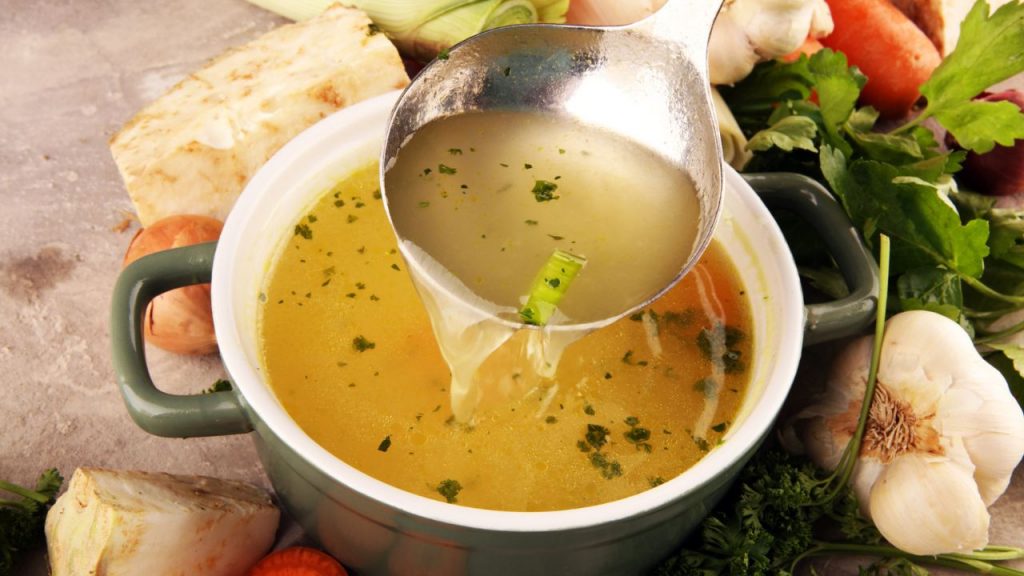With winter at our doorstep, warm and hearty food such as stews and soups will likely make its way onto the dinner menu in many households more often. You might have encountered recipes calling for either stock or broth and wondered if you could use them interchangeably. While these two ingredients are often used similarly, some key differences can affect the outcome of your dish.
Ingredients
The biggest difference between stock and broth lies in their main ingredients. Broth is typically made from meat, while stock is usually made from bones.
READ MORE: Hints and tips for a great stock
Both are often combined with aromatic vegetables such as carrots, celery, and onions. Stock generally doesn’t contain seasoning so that it can be controlled easier and used in various ways in recipes, while broth is well-seasoned.
Texture
Another difference between stock and broth is the texture. Stock has a thicker consistency due to the gelatin and collagen that can be found in the bones.
RECIPE TO TRY: Basic bone broth
This makes stock great for use in sauces, gravies, and stews where a thicker consistency is desired. On the other hand, broth has a thinner texture, which is ideal for soups.
What about veggie broth and stock?
For those who prefer to cook with meat-free ingredients, vegetable stock and broth are available. Some companies may add plant-based gelatin to vegetable stock to give it added thickness.
READ MORE: How to make fresh vegetable and beef stock
Can you substitute one with the other?
While you can use stock and broth interchangeably in many recipes, the seasoning required for each differs. If you use stock, you may need to use more seasoning than in the case of broth.
ALSO SEE: 4 Stock recipes: chicken, vegetable, beef and fish
Feature image: Getty Images

